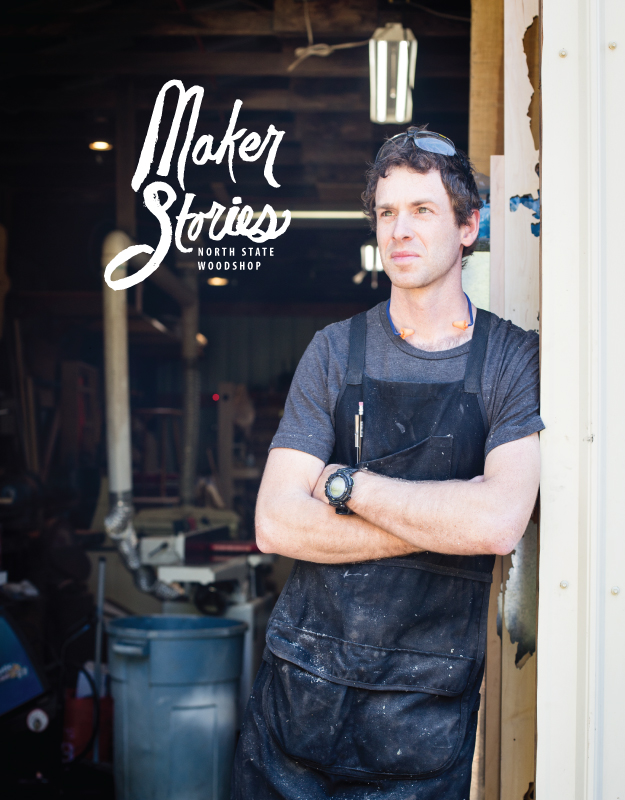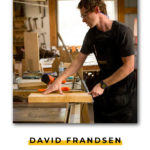I first discovered David’s work at a shop downtown. I was attending a pop-up shop and scattered throughout the upstairs loft we stunning mid century modern pieces. They had craft, melding form and function. Whether multiple layers of wood or soft curves, no detail was overlooked. They were beautiful and I realized that I had stumbled upon a hidden gem in Redding. As soon as my eyes laid on the first end table, I knew I wanted to meet this maker, hear his story, and learn about his craft. Today we launch a new column as we explore the world of makers and sit down with David of North State Woodshop.
Keep reading for the full interview after the jump!


How did it all begin? What started your love for creating? Why did you choose wood as your medium?
It all happened by accident. My background is in construction. My dad owned a construction company. I had been doing that for as long as I can remember. About three years ago, I knew I needed to get of construction and get out on my own. We had a baby boy and it was one of those things, if I didn’t switch careers when my family is young, it was going to be a lot harder when my family was older. I already knew I didn’t want to do construction for the rest of my life. Now was the time to do it. I quit working for my dad somewhat prematurely with nothing else lined up. I had all of this time. At the same time, my dad acquired a new shop space where there was space to play and work around. I started creating a few pieces of furniture and see if I could sell some pieces. Everything evolved from there.
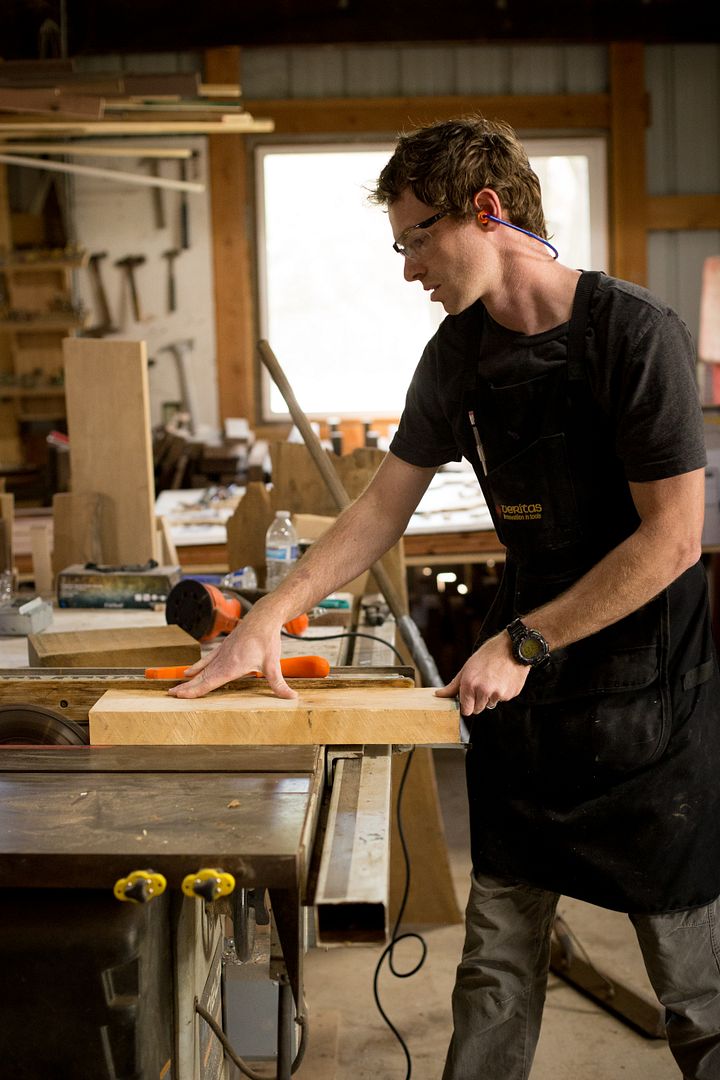
What inspires your creative process? How do you cultivate inspiration?
I don’t feel the need to reinvent the wheel. Furniture serves a form and a function. I refer to Pinterest for visual inspiration and follow other wood workers. Sometimes a thought comes from random ideas. Usually it starts from an aspect of something cool or fun that I’ve seen. Then as a creative my mind moves toward, “How can I improve this and add my own flavor to it?” I really love mid century furniture and 1950s inspired pieces that have come back in vogue. They’ve proved to be somewhat timeless pieces. I try to put that twist on my pieces with all the lines and edges chamfered or rounded, softened when it comes to wood and furniture.
A lot of times my design process begins with a sketch. Then I head to the shop and enjoy working with wood. Not so much metal. If it requires structural support, maybe metal. From the beginning of time people have been working with wood. There’s a sense of carrying on what people have been doing for thousands of years and building onto that tradition if you will.
How does your space and shop continue to keep you inspired?
My workspaces mirror my workflow. I have one shop off site and one shop where I live. The shop at my house is much cleaner. It’s where I do my finishing, a space that’s dust-free. The inspiration for me is found in the machines and the raw wood lying around. This is a dedicated space where everything happens. There’s something about the creativity that happens when you can make a mess, having sawdust around, and you can leave your stuff at the end of the day. Then you come back and it’s sitting on the bench in pieces. With long projects you have all these pieces sitting there and there’s no forward momentum until you do a glue-up at the very end. It finally comes together and this piece, once sketches on a piece of paper, becomes real. Having the end vision in mind is really important because sometimes it’s just a bunch of parts until everything comes together.
What are some ways you want to grow your business and your craft this year?
I want to explore and drill down my niche. What is the thing I can do better than anybody else? I think custom work is a part of that for this season. I really want to be known for mid century and custom work. But long-term, I want to explore flat-pack style furniture that can be pieced together and shipped in a box. IKEA started the whole idea and did it really well. I always ask myself why can’t you do that and have pieces that look custom and look like a $3000 end table. It looks and feels like a custom piece of furniture but ships and packs down into something that is portable and accessible to anyone in the world. That’s something I want to explore.
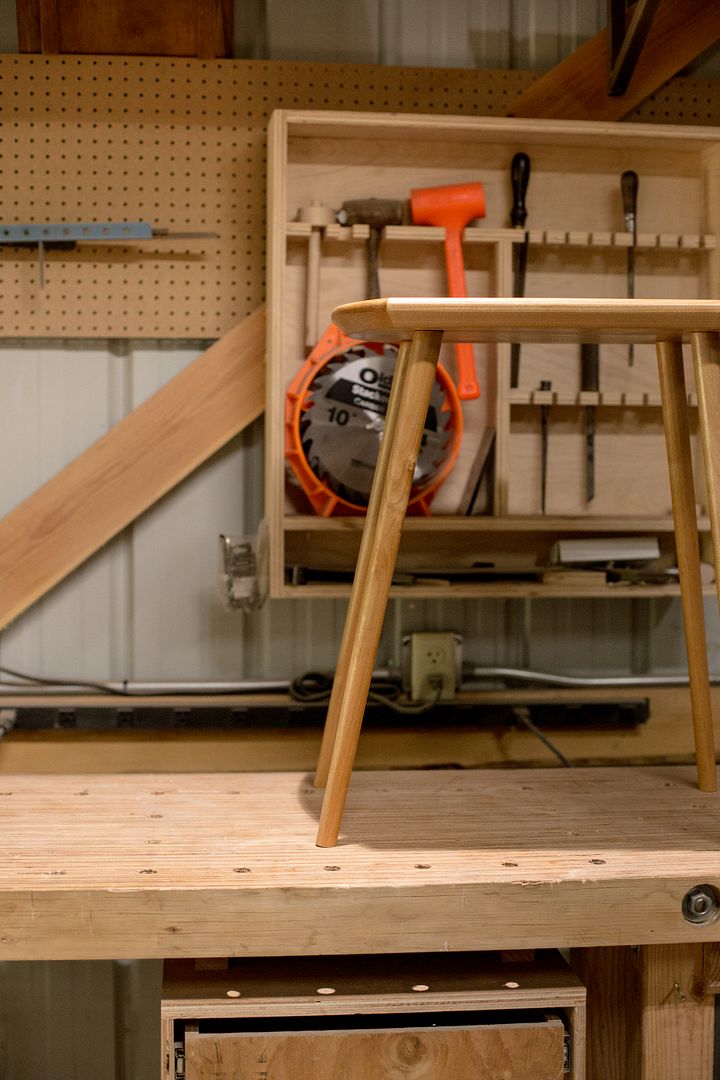
Tell me about life as a maker in Redding.
I’m fairly new to the game and think my answer will probably change over time. I follow a lot of other makers and woodworkers specifically. There is one guy in the Midwest and all he has for miles is cornfields around him. He has a hard time, but has done really well with custom work, even without being around any major city hub. In one sense, I really love that I can drive 2-3 hours and be in places like San Francisco and Sacramento. I can sell pieces to surrounding area. I like that Redding isn’t a major hub. Growing up in the foothills and the North Valley, I’ve always drawn inspiration from the mountains and the trees and the fact that it’s born out in the wilderness. It’s a place that feels removed and on the outskirts. I tend to do backpacking and that sort of thing. It’s perfect for my creative process.
At times in Redding, there aren’t as many high end clientele around as I would like. It’s a little harder to sell pieces in the custom furniture arena. But, I look at it as a challenge along the way.

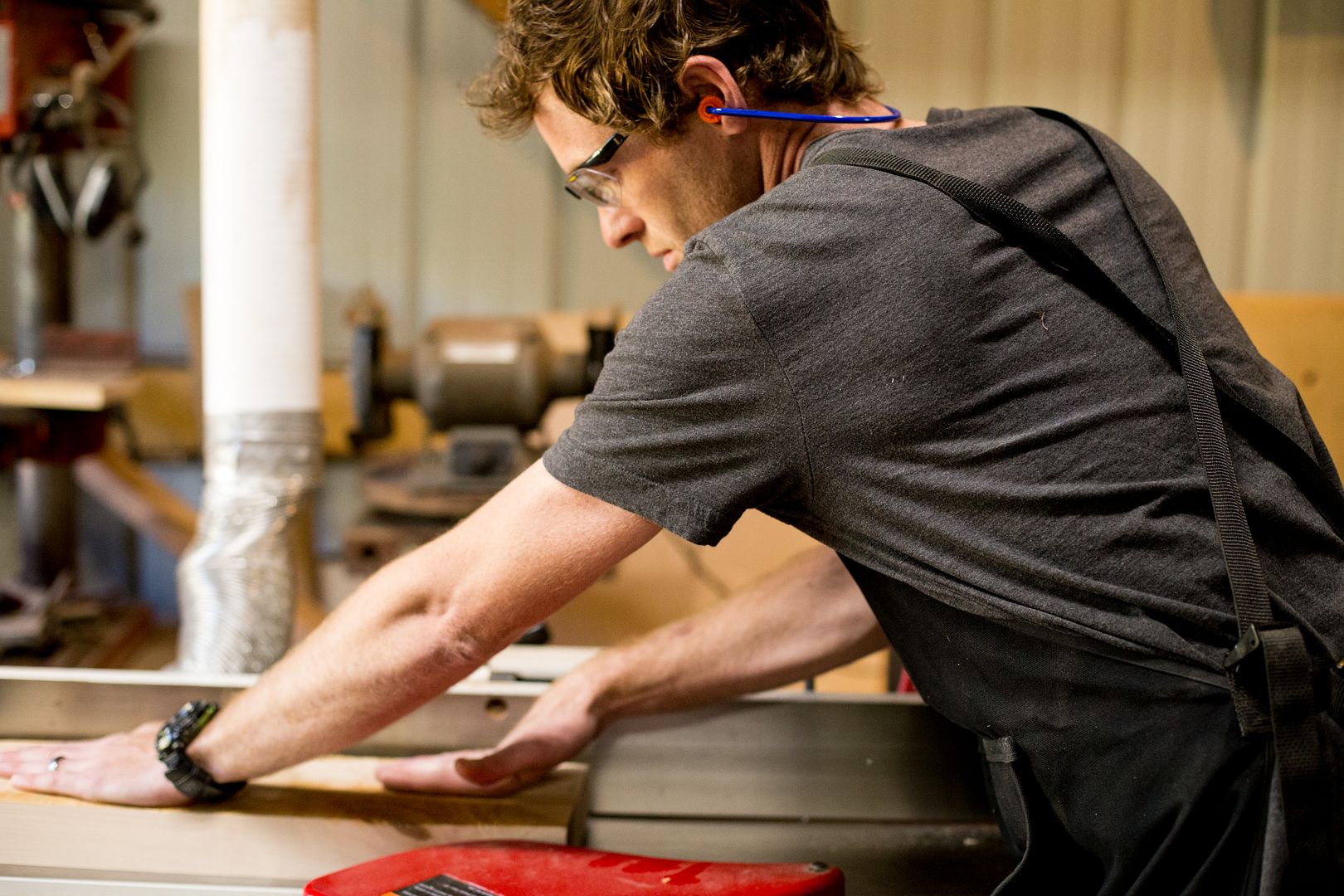
What role do you play in transforming the community at large?
Redding is an interesting place because in some ways, I feel that Redding is a city of followers. We’ve always taken inspiration from other cities like Bend, Oregon or San Francisco or other places that are moving and shaking. But I see Redding as being full of leaders and movers and shakers that want to change that. I think we’re right around the corner of a shift. Instead of following and looking to others, we’re starting to lead and innovate. I see my part as helping that happen in the woodworking arena and pushing the envelope for design, aesthetic, and the craft. I think Redding is a special place to do that.
If you had one piece of advice to a maker starting out, what would you say.
You’ve just got to do it and get your hands dirty. Often times we get discouraged with social media. There’s always someone in our eyes who are better than us. You don’t learn and grow until you get out and just do it.
Interested in seeing more of David’s work? Find him on Instagram or the web.

